Optimization and Quality Assessment of Arrival Time Picking for Downhole Microseismic Events
Abstract
1. Introduction
2. Methodology
2.1. Quality Assessment of Arrival Time Picks
2.2. Arrival Refinement Based on Waveform Cross-Correlation
2.3. Global Consistency Processing
3. Synthetic Data Analysis
4. Field Data Analysis
5. Conclusions
Author Contributions
Funding
Institutional Review Board Statement
Informed Consent Statement
Data Availability Statement
Acknowledgments
Conflicts of Interest
References
- Maxwell, S.C. Microseismic imaging of hydraulic fracturing: Improved engineering of unconventional shale reservoirs. In Proceedings of the Society of Exploration Geophysicists, Denver, CO, USA, 26–31 October 2014; pp. 127–153. [Google Scholar] [CrossRef]
- Warpinski, N.R.; Wolhart, S. A validation assessment of microseismic monitoring. In Proceedings of the SPE Hydraulic Fracturing Technology Conference, The Woodlands, TX, USA, 9–11 February 2016. [Google Scholar] [CrossRef]
- Eaton, D.W. Passive Seismic Monitoring of Induced Seismicity: Fundamental Principles and Application to Energy Technologies; Cambridge University Press: Cambridge, UK, 2018; pp. 209–239. [Google Scholar] [CrossRef]
- Wang, Y.; Shang, X.; Peng, K. Locating Mine Microseismic Events in a 3D Velocity Model through the Gaussian Beam Reverse-Time Migration Technique. Sensors 2020, 20, 2676. [Google Scholar] [CrossRef] [PubMed]
- Zhang, Z.; Arosio, D.; Hojat, A.; Zanzi, L. Reclassification of Microseismic Events through Hypocenter Location: Case Study on an Unstable Rock Face in Northern Italy. Geosciences 2021, 11, 37. [Google Scholar] [CrossRef]
- Akram, J. Understanding Downhole Microseismic Data Analysis; Springer International Publishing: Berlin/Heidelberg, Germany, 2020. [Google Scholar] [CrossRef]
- Hayles, K.; Horine, R.L.; Checkles, S.; Blangy, J.P. Comparison of microseismic results from the Bakken formation processed by three different companies. In Proceedings of the Society of Exploration Geophysicists International Exposition and 81st Annual Meeting 2011, San Antonio, TX, USA, 18–23 September 2011. [Google Scholar] [CrossRef]
- Li, C.; Dohmen, T.; Morton, S.; Katahara, K.; Hayles, K.; Checklist, S.; Blangy, J.P. Evaluating the quality of microseismic event locations. In Proceedings of the SEG Technical Program Expanded Abstracts 2012, Las Vegas, NV, USA, 4–9 November 2012. [Google Scholar] [CrossRef]
- Castellanos, F.; Van der Baan, M. Waveform similarity for quality control of event locations, time picking, and moment tensor solutions. Geophysics 2015, 80, WC99–WC106. [Google Scholar] [CrossRef][Green Version]
- Akram, J.; Eaton, D.W. A review and appraisal of arrival-time picking methods for downhole microseismic data. Geophysics 2016, 81, KS71–KS91. [Google Scholar] [CrossRef]
- Withers, M.; Aster, R.; Young, C.; Beiriger, J.; Harris, M.; Moore, S.; Trujillo, J. A comparison of select trigger algorithms for automated global seismic phase and event detection. Bull. Seismol. Soc. Am. 1998, 88, 95–106. [Google Scholar] [CrossRef]
- Akram, J.; Peter, D.; Eaton, D. A k-mean characteristic function for optimizing short-and long-term-average-ratio-based detection of microseismic events. Geophysics 2019, 84, KS143–KS153. [Google Scholar] [CrossRef]
- Sleeman, R.; Van Eck, T. Robust automatic P-phase picking: An on-line implementation in the analysis of broadband seismogram recordings. Phys. Earth Planet. Inter. 1999, 113, 265–275. [Google Scholar] [CrossRef]
- Moriya, H. Spectral matrix analysis for detection of polarized wave arrivals and its application to seismic reflection studies using local earthquake data. Earth Planets Space 2009, 61, 1287–1295. [Google Scholar] [CrossRef]
- Lois, A.; Sokos, E.; Martakis, N.; Paraskevopoulos, P.; Tselentis, G.A. A new automatic S-onset detection technique: Application in local earthquake data. Geophysics 2013, 78, KS1–KS11. [Google Scholar] [CrossRef]
- Dong, X.; Li, Y.; Wu, N.; Tian, Y.; Yu, P. The S-STK/LTK algorithm for arrival time picking of microseismic signals. J. Geophys. Eng. 2018, 15, 1484–1491. [Google Scholar] [CrossRef]
- Karastathis, V.; Aspiotis, T.; Tselentis, A.; Russill, N. Automatic S-wave picking based on time-frequency analysis for passive seismic applications. In Proceedings of the SEG Technical Program Expanded Abstracts 2016, Dallas, TX, USA, 16–21 October 2016. [Google Scholar] [CrossRef]
- Diehl, T.; Deichmann, N.; Kissling, E.; Husen, S. Automatic S-wave picker for local earthquake tomography. Bull. Seismol. Soc. Am. 2009, 99, 1906–1920. [Google Scholar] [CrossRef]
- Tan, Y.Y.; He, C. Improved methods for detection and arrival picking of microseismic events with low signal-to-noise ratios. Geophysics 2016, 81, KS93–KS111. [Google Scholar] [CrossRef]
- Chen, Y. Automatic microseismic event picking via unsupervised machine learning. Geophys. J. Int. 2020, 222, 1750–1764. [Google Scholar] [CrossRef]
- Zhang, X.; Chen, H.; Zhang, W.; Tian, X.; Chu, F. Generalized neural network trained with a small amount of base samples: Application to event detection and phase picking in downhole microseismic monitoring. Geophysics 2021, 86, KS95–KS108. [Google Scholar] [CrossRef]
- Zhang, Y.; Leng, J.; Dong, Y.; Yu, Z.; Hu, T.; He, C. Phase arrival picking for bridging multi-source downhole microseismic data using deep transfer learning. J. Geophys. Eng. 2022, 19, 178–191. [Google Scholar] [CrossRef]
- Chen, L.; Liu, Y.; Kong, F.; He, N. Acoustic Source Localization Based on Generalized Cross-correlation Time-delay Estimation. Procedia Eng. 2011, 15, 4912–4919. [Google Scholar] [CrossRef]
- Wang, Y.; Shang, X.; Peng, K. Relocating mining microseismic earthquakes in a 3-D velocity model using a windowed cross-correlation technique. IEEE Access 2020, 8, 37866–37878. [Google Scholar] [CrossRef]
- Shang, X.; Wang, Y.; Miao, R. Acoustic emission source location from P-wave arrival time corrected data and virtual field optimization method. Mech. Syst. Signal Process. 2022, 163, 108–129. [Google Scholar] [CrossRef]
- Du, C.; Yu, S.; Yin, H.; Sun, Z. Microseismic Time Delay Estimation Method Based on Continuous Wavelet. Sensors 2022, 22, 2845. [Google Scholar] [CrossRef]
- Wang, P.; Chang, X.; Zhou, X. Estimation of the Relative Arrival Time of Microseismic Events Based on Phase-Only Correlation. Energies 2018, 11, 2527. [Google Scholar] [CrossRef]
- Kocon, K.; van der Baan, M. Quality assessment of microseismic event locations and traveltime picks using a multiplet analysis. Lead. Edge 2012, 31, 1330–1337. [Google Scholar] [CrossRef][Green Version]
- Reshetnikov, A.; Shapiro, S.A. Common-receiver gathers as a tool for analysis of microseismic waveforms and quality of time picks. In Proceedings of the 76th Annual International Conference and Exhibition EAGE, Amsterdam, The Netherlands, 16–19 June 2014. [Google Scholar] [CrossRef]
- Kummerow, J. Joint Arrival Time Optimization for Microseismic Events Recorded by Seismic Borehole Arrays. In Proceedings of the 75th EAGE Conference & Exhibition incorporating, London, UK, 10–13 June 2013. [Google Scholar] [CrossRef]
- Gibbons, S.J.; Ringdal, F. The detection of low magnitude seismic events using array-based waveform correlation. Geophys. J. Int. 2006, 165, 149–166. [Google Scholar] [CrossRef]
- Kimball, C.V.; Marzetta, T.L. Semblance processing of borehole acoustic array data. Geophysics 1984, 49, 274–281. [Google Scholar] [CrossRef]
- VanDecar, J.C.; Crosson, R.S. Determination of teleseismic relative phase arrival times using multi-channel cross-correlation and least squares. Bull. Seismol. Soc. Am. 1990, 80, 150–169. [Google Scholar] [CrossRef]
- De Meersman, K.; Kendall, J.M.; Van der Baan, M. The 1998 Valhall microseismic data set: An integrated study of relocated sources, seismic multiplets, and S-wave splitting. Geophysics 2009, 74, B183–B195. [Google Scholar] [CrossRef]
- Zhao, W.; Xin, W.; Mao, Z.H.; Zhai, S.; Hu, T.Y.; He, C. Focal mechanism inversion with single-well microseismic wave energy. Oil Geophys. Prospect. 2018, 53, 945–953. [Google Scholar] [CrossRef]
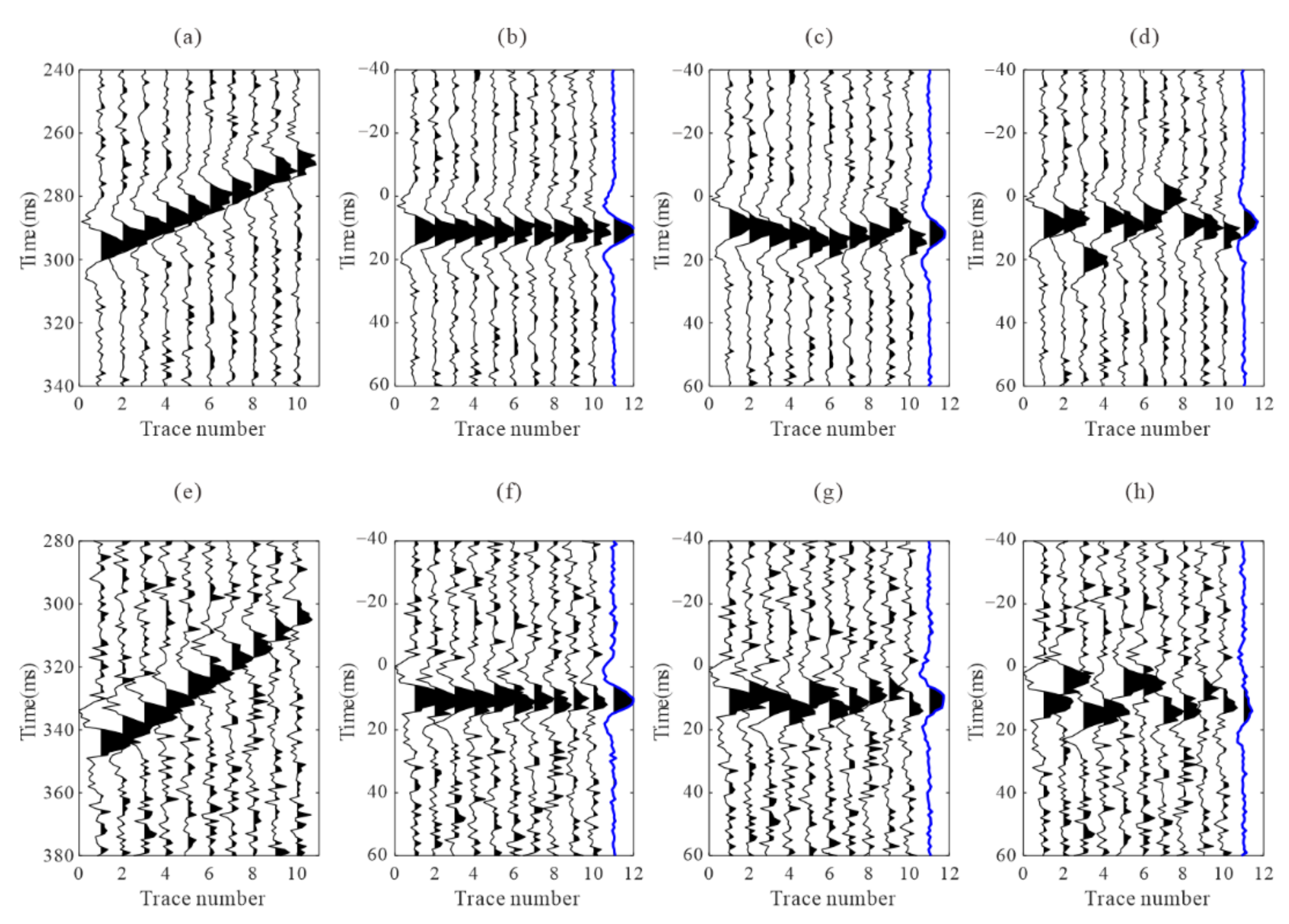
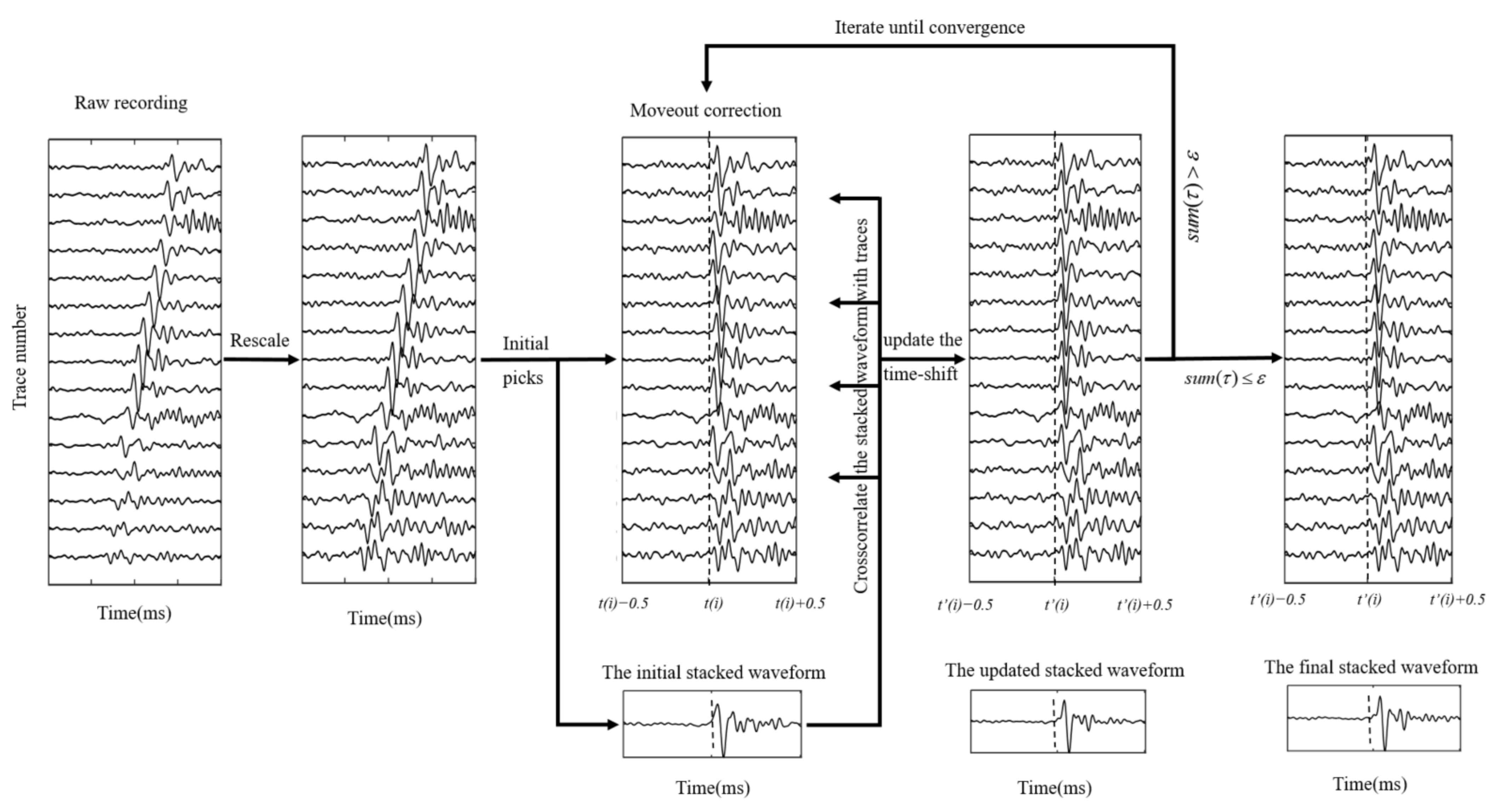
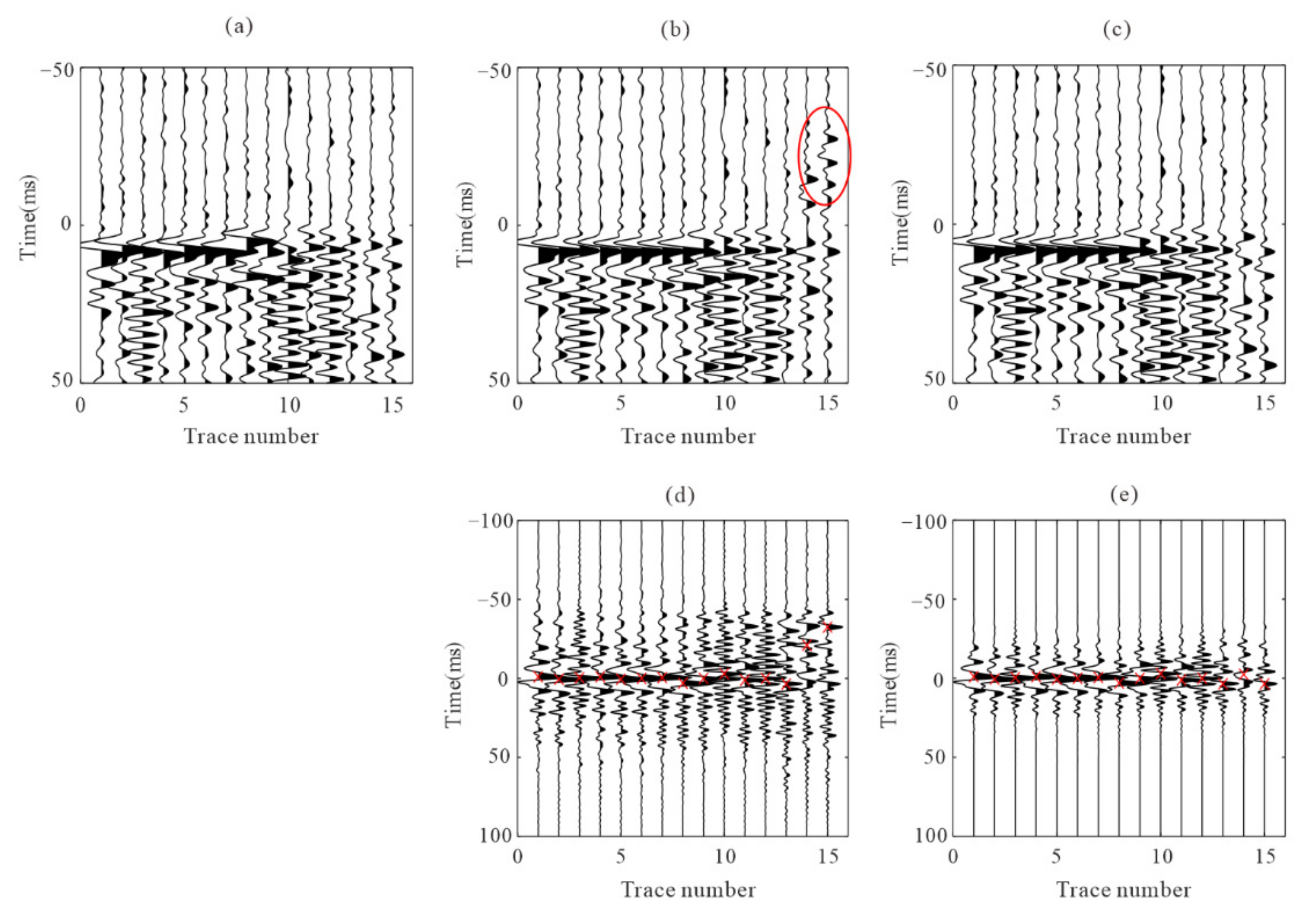
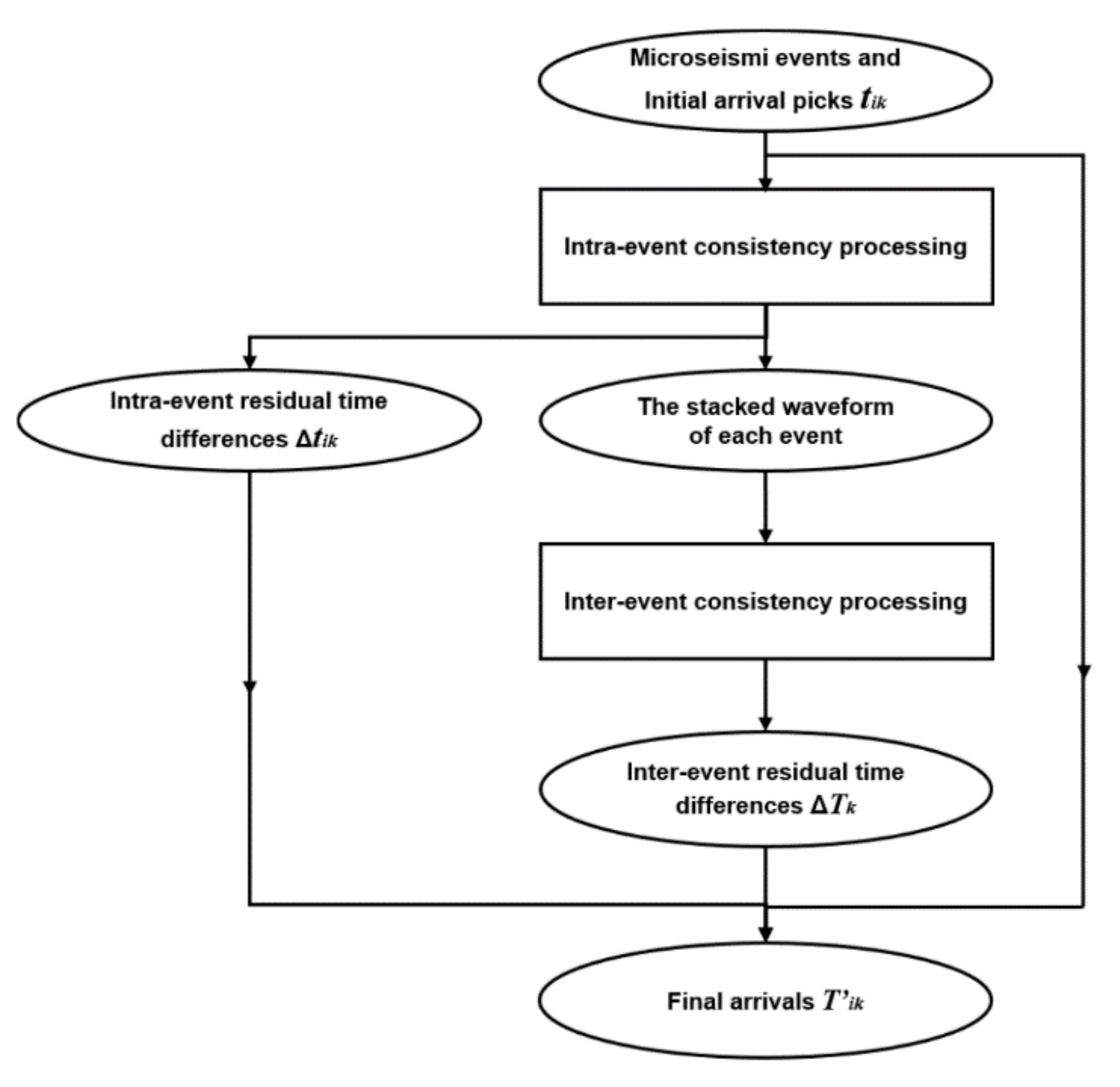
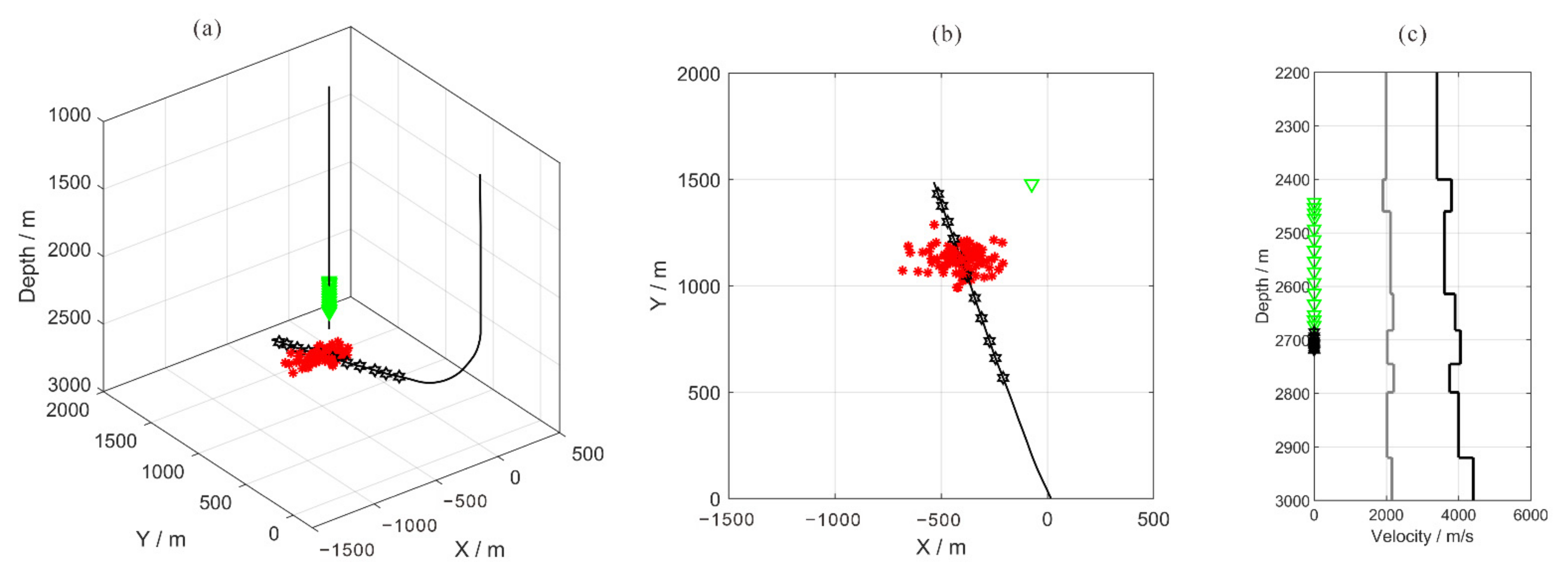
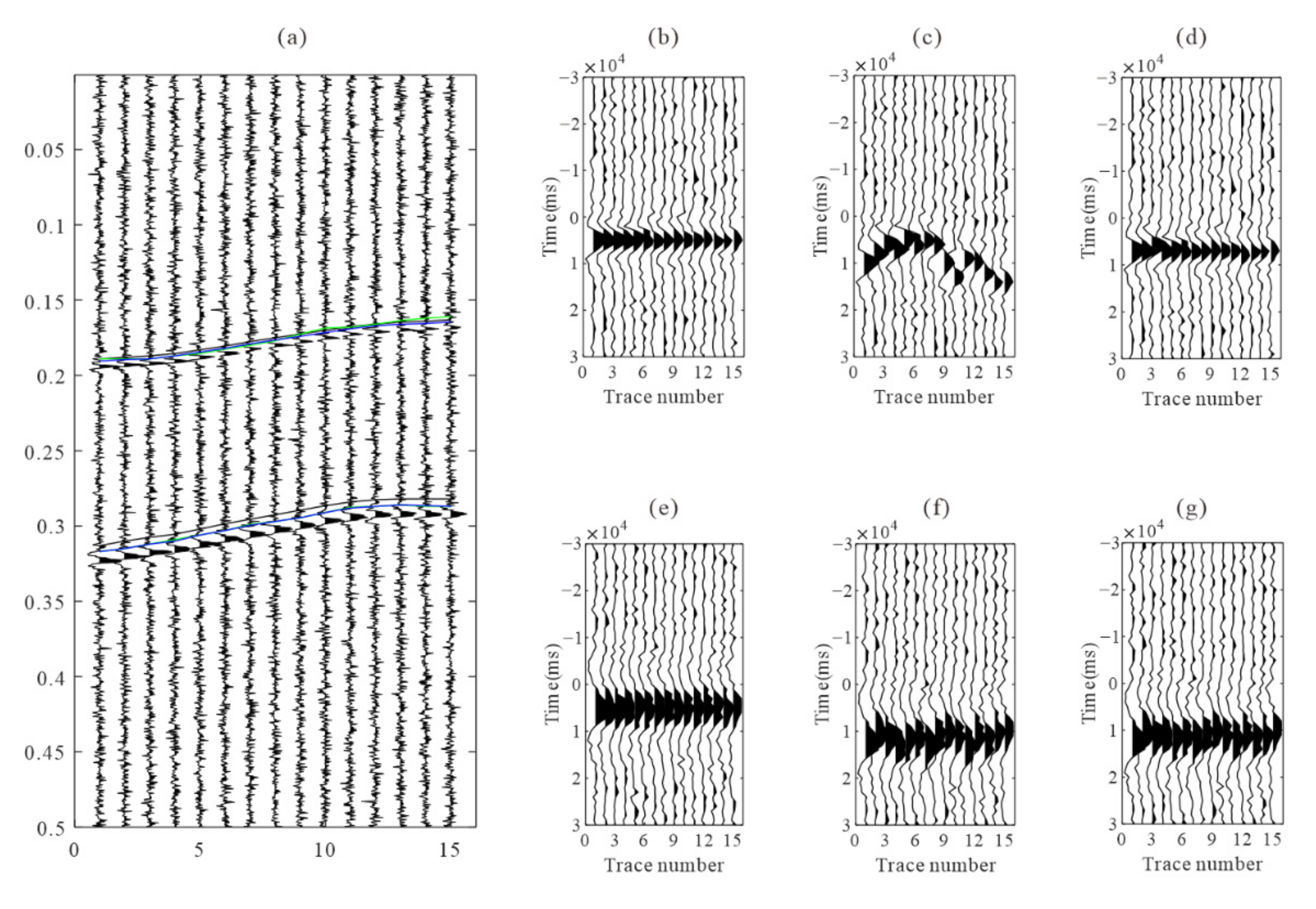
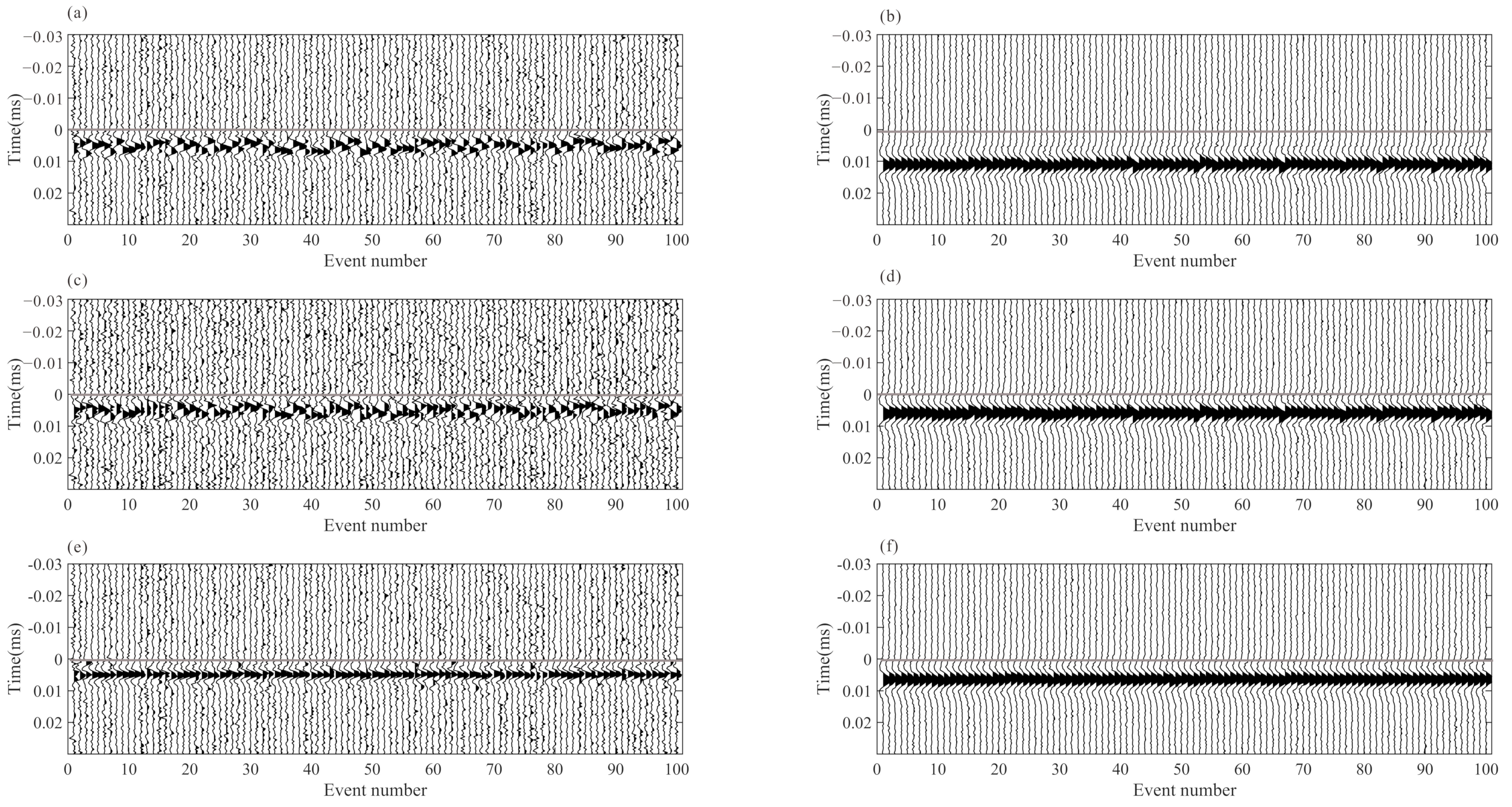
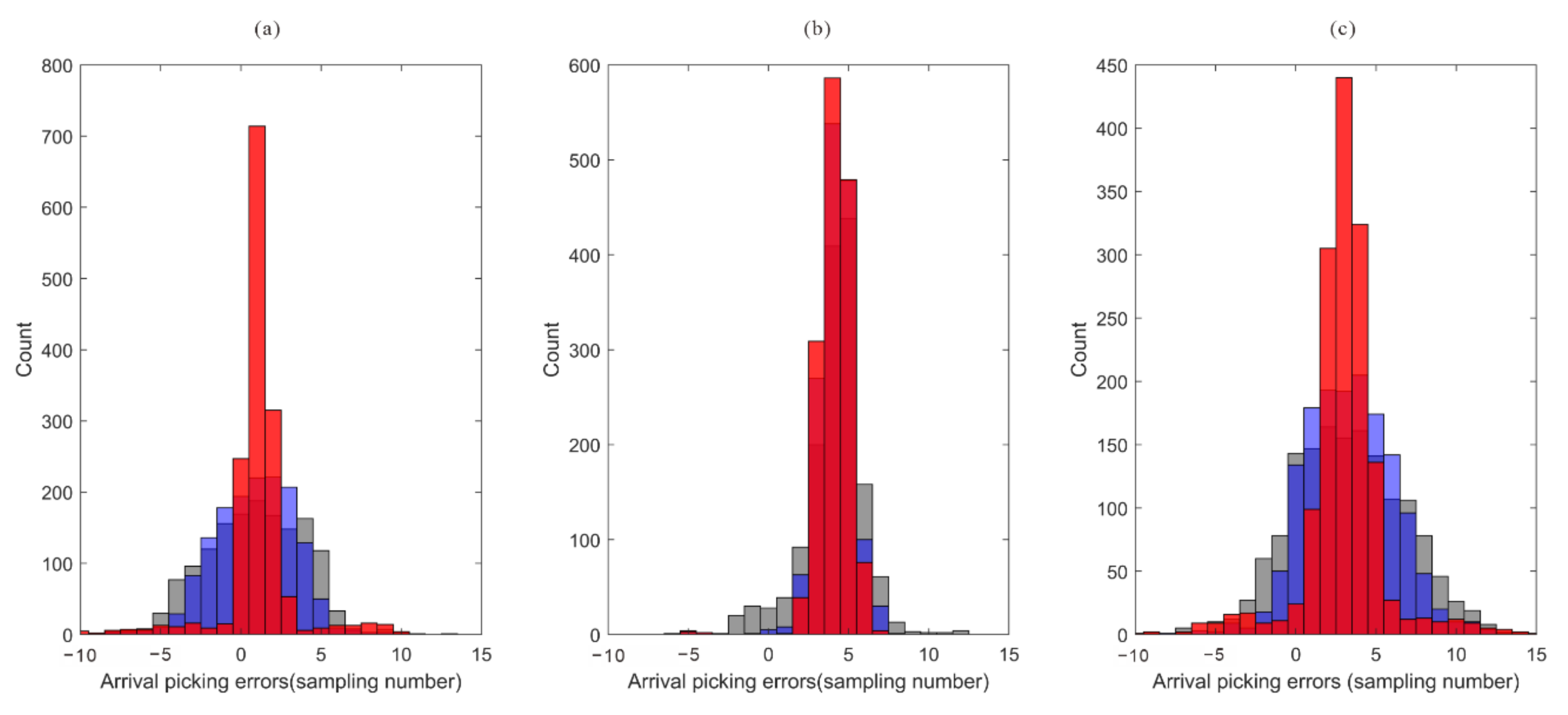


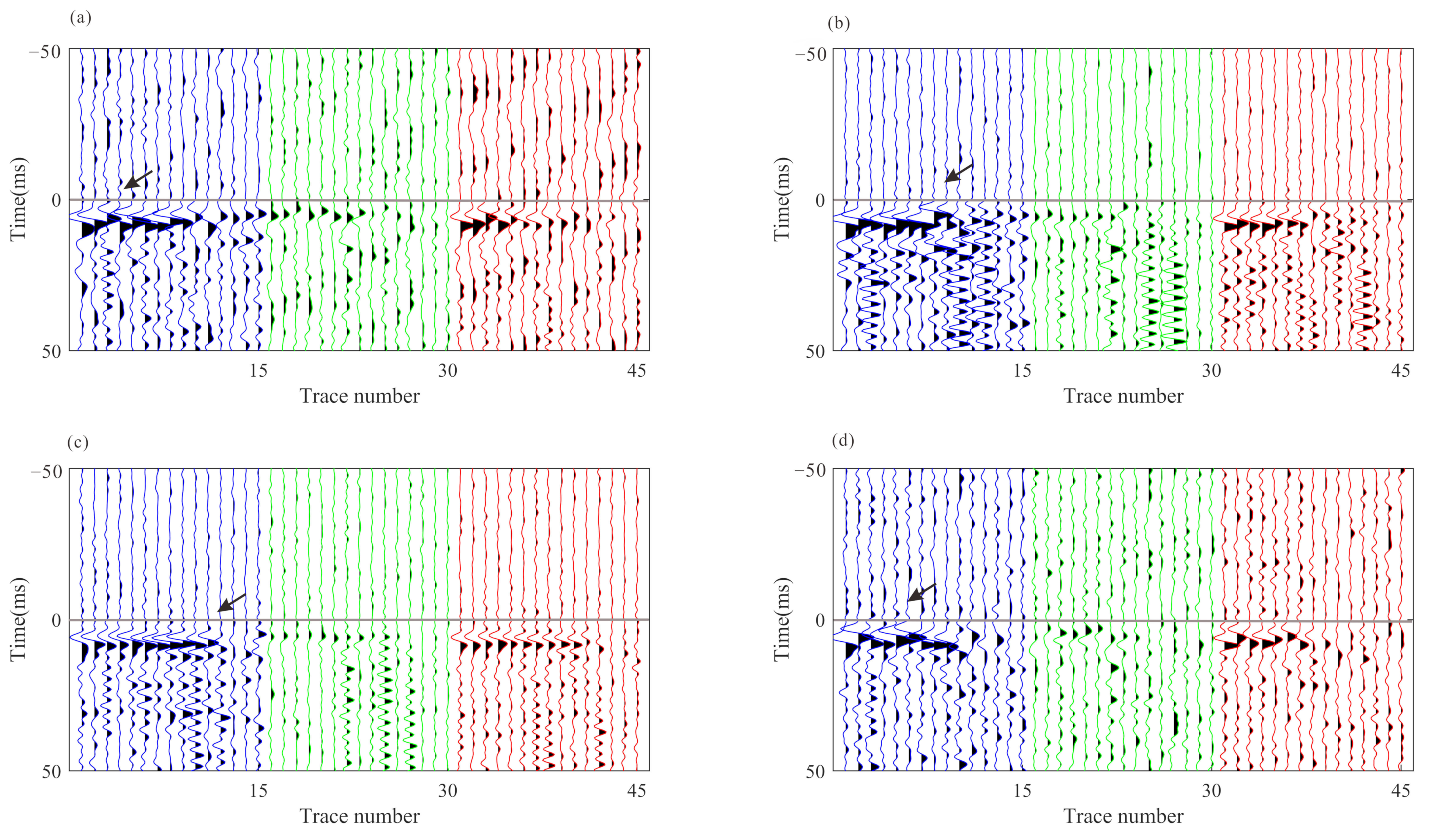

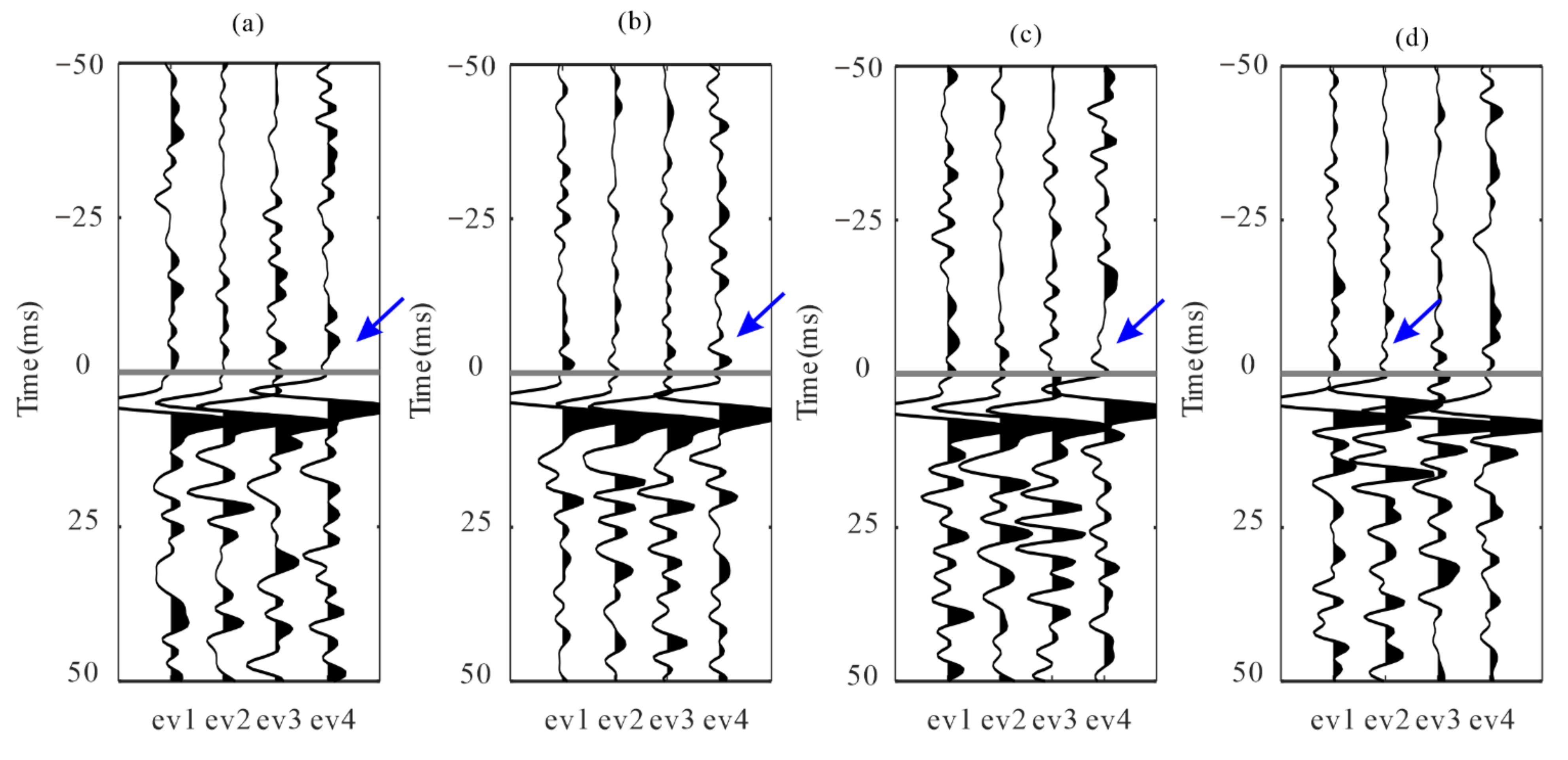
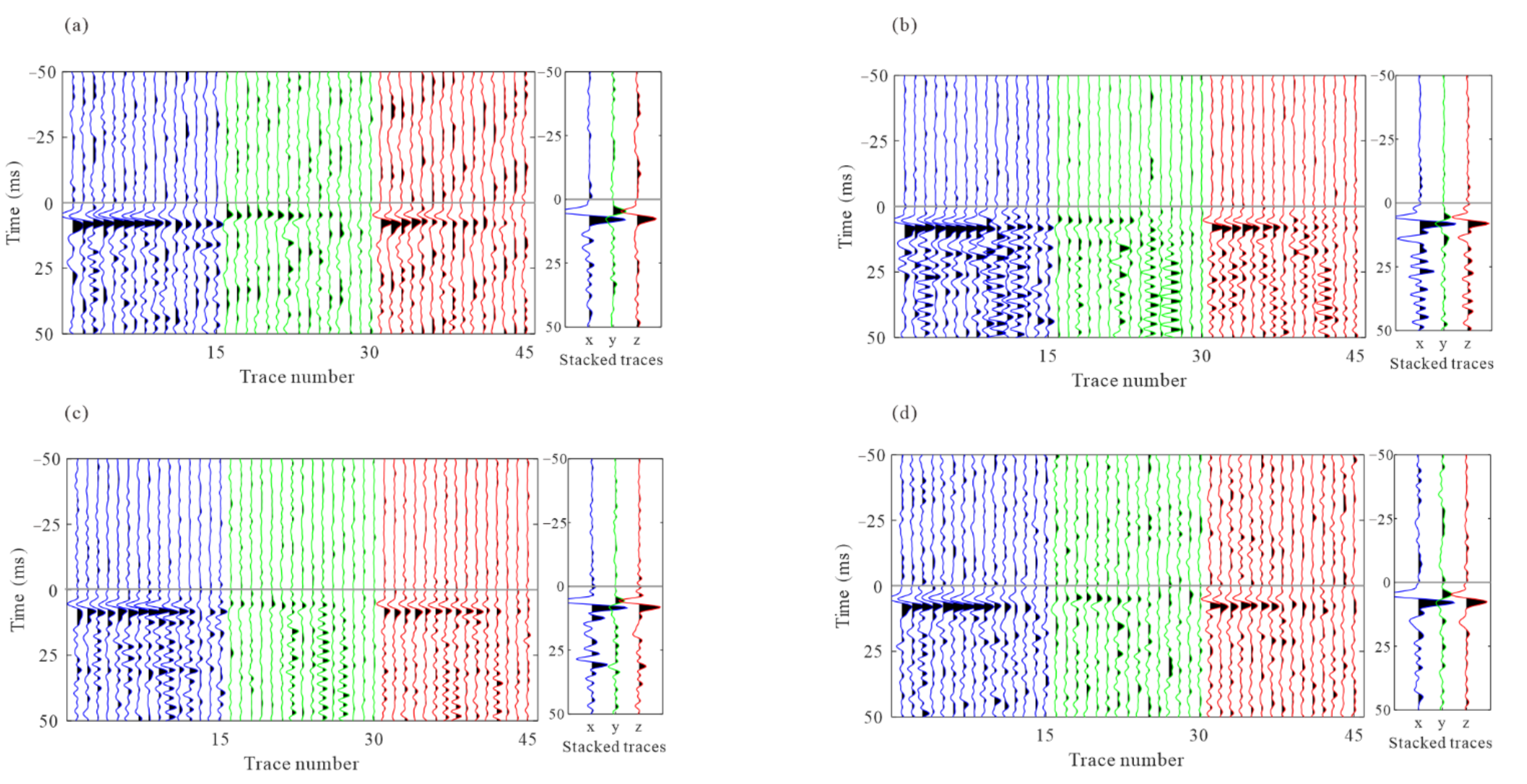
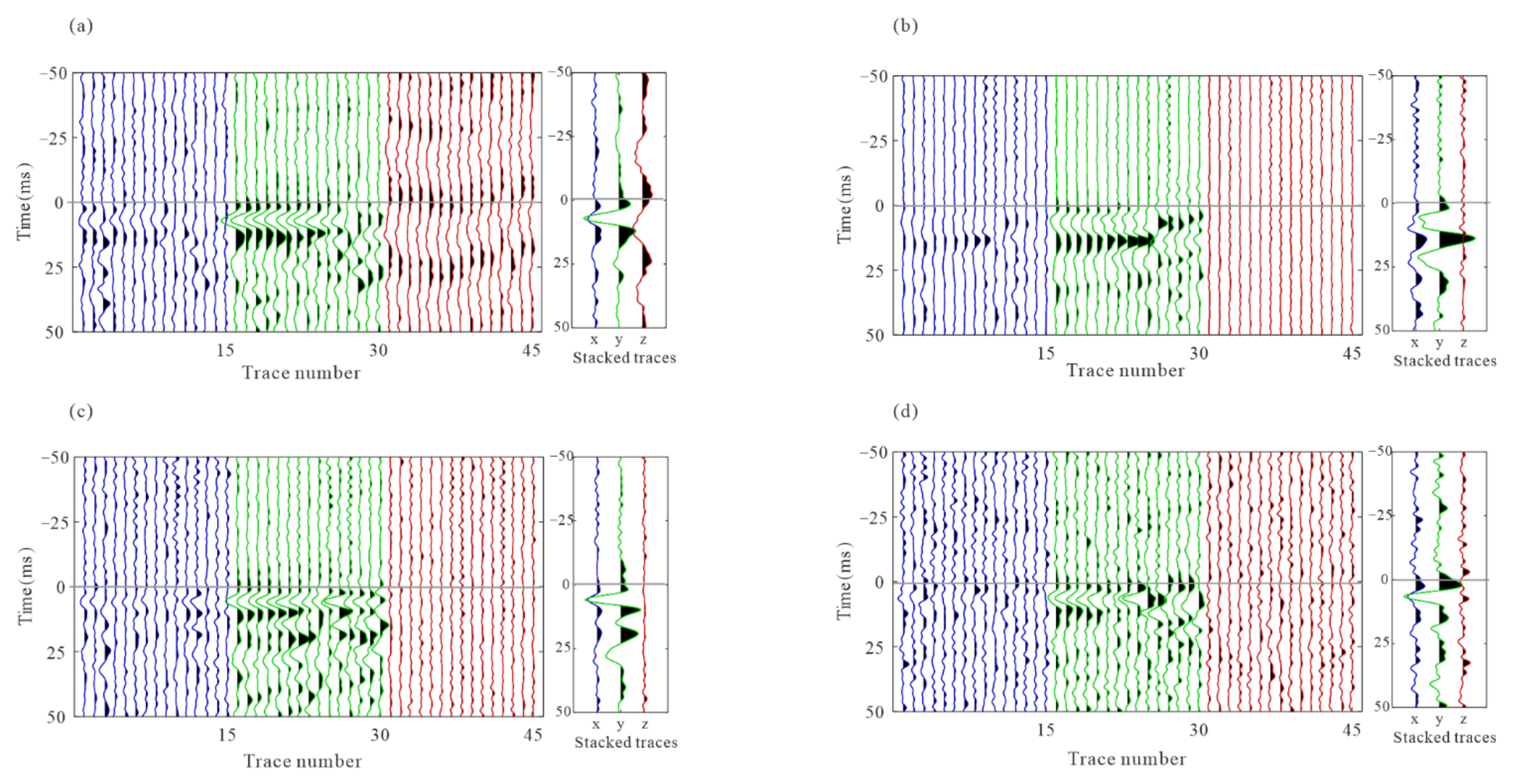
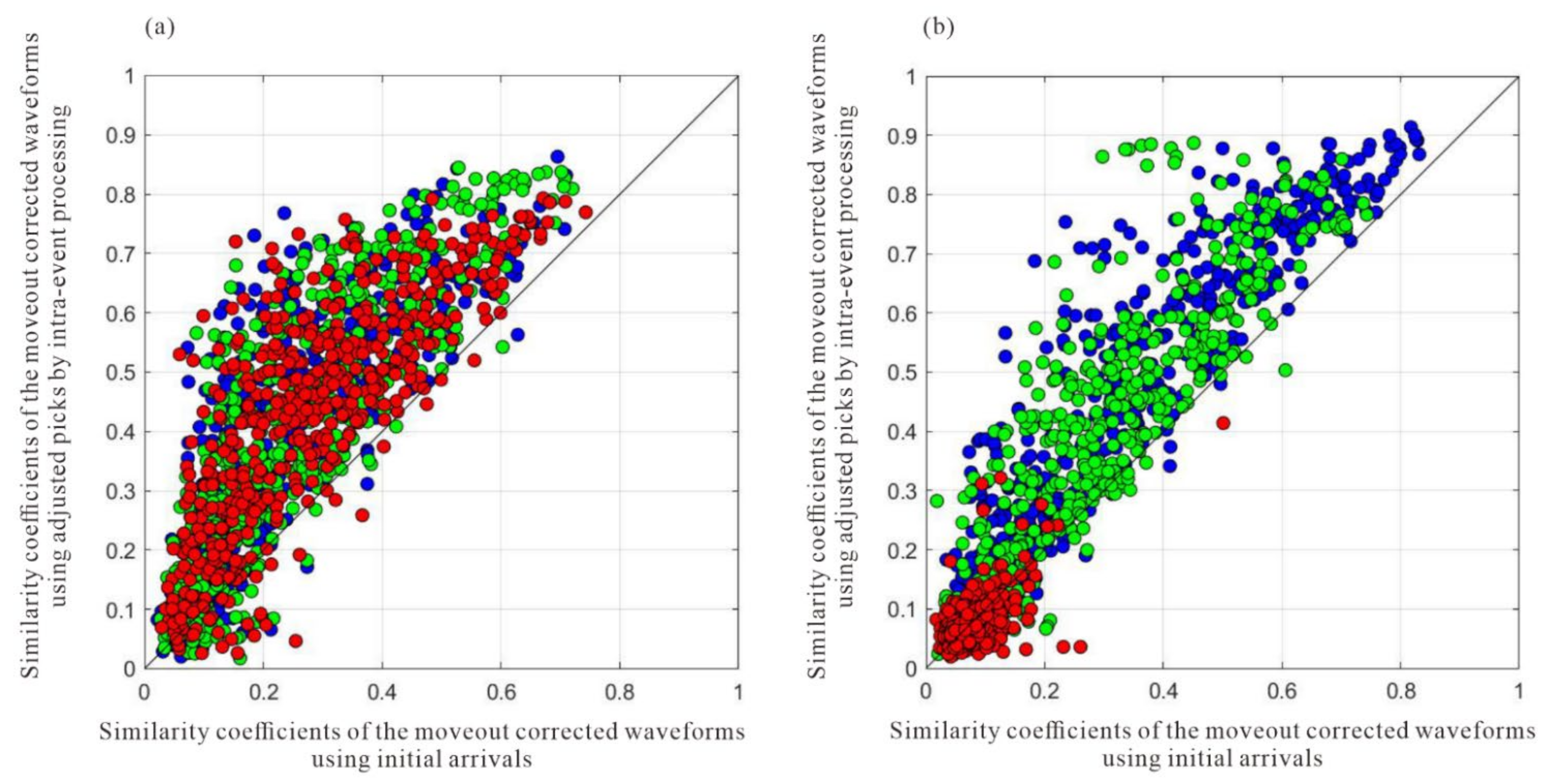
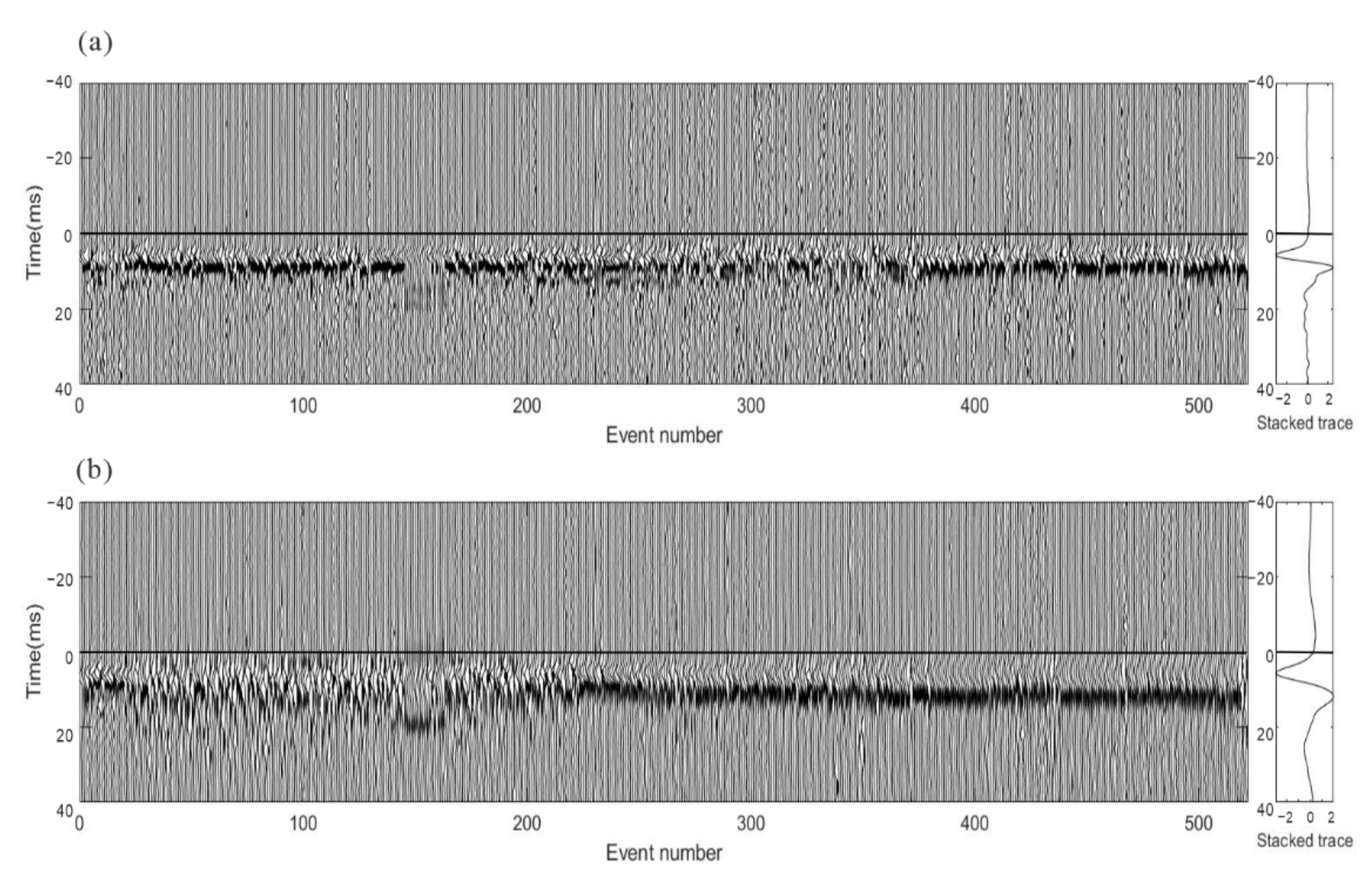
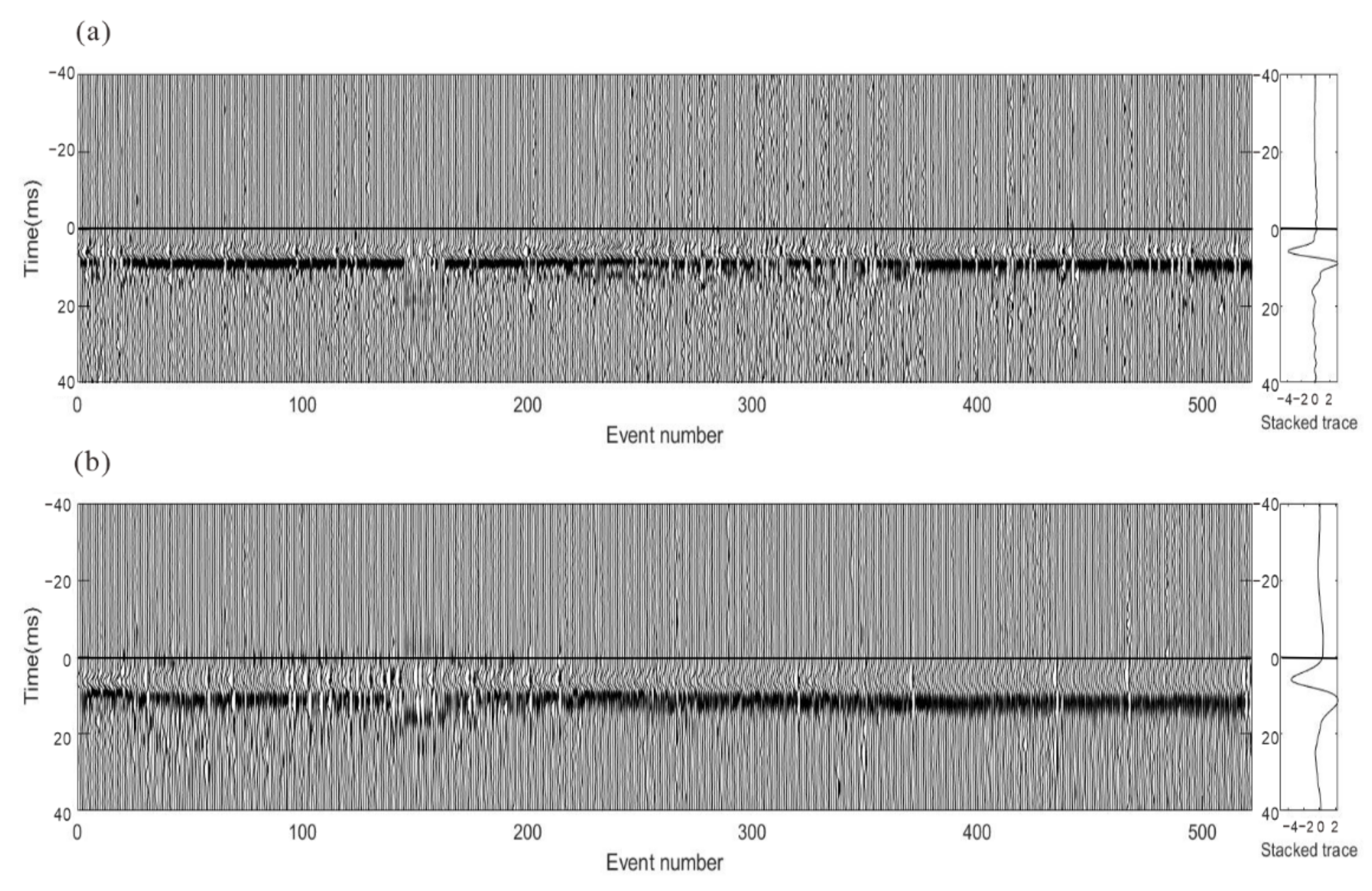
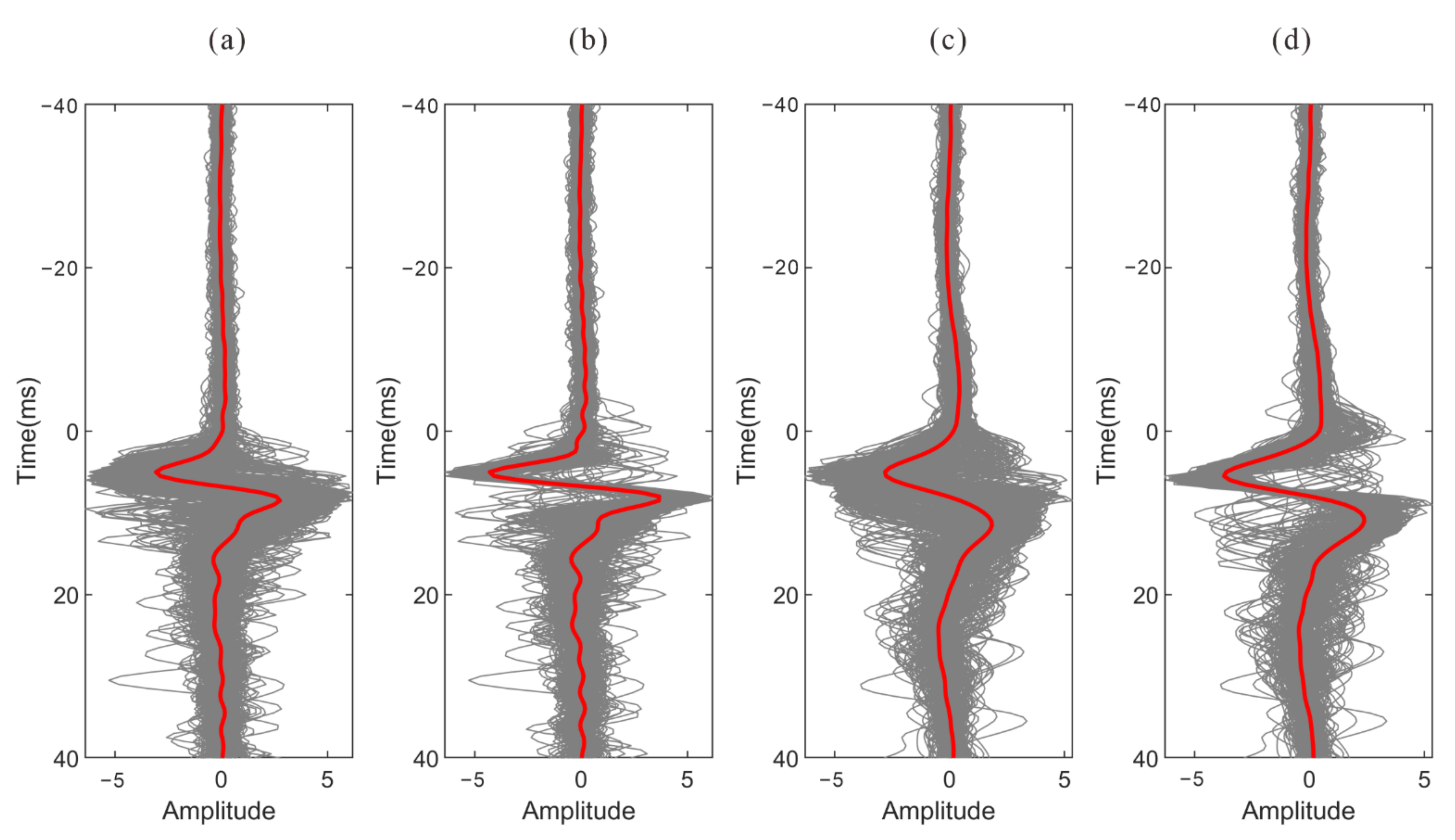

| The Similarity Coefficients | Accurate Arrivals | Arrival Error with 2 ms Standard Deviation Error | Arrivals Error with 5 ms Standard Deviation Error |
|---|---|---|---|
| S1 | 0.782 | 0.532 | 0.191 |
| S2 | 0.576 | 0.471 | 0.163 |
| X12 | 0.965 | 0.895 | 0.621 |
Publisher’s Note: MDPI stays neutral with regard to jurisdictional claims in published maps and institutional affiliations. |
© 2022 by the authors. Licensee MDPI, Basel, Switzerland. This article is an open access article distributed under the terms and conditions of the Creative Commons Attribution (CC BY) license (https://creativecommons.org/licenses/by/4.0/).
Share and Cite
Leng, J.; Yu, Z.; Mao, Z.; He, C. Optimization and Quality Assessment of Arrival Time Picking for Downhole Microseismic Events. Sensors 2022, 22, 4065. https://doi.org/10.3390/s22114065
Leng J, Yu Z, Mao Z, He C. Optimization and Quality Assessment of Arrival Time Picking for Downhole Microseismic Events. Sensors. 2022; 22(11):4065. https://doi.org/10.3390/s22114065
Chicago/Turabian StyleLeng, Jiaxuan, Zhichao Yu, Zhonghua Mao, and Chuan He. 2022. "Optimization and Quality Assessment of Arrival Time Picking for Downhole Microseismic Events" Sensors 22, no. 11: 4065. https://doi.org/10.3390/s22114065
APA StyleLeng, J., Yu, Z., Mao, Z., & He, C. (2022). Optimization and Quality Assessment of Arrival Time Picking for Downhole Microseismic Events. Sensors, 22(11), 4065. https://doi.org/10.3390/s22114065





